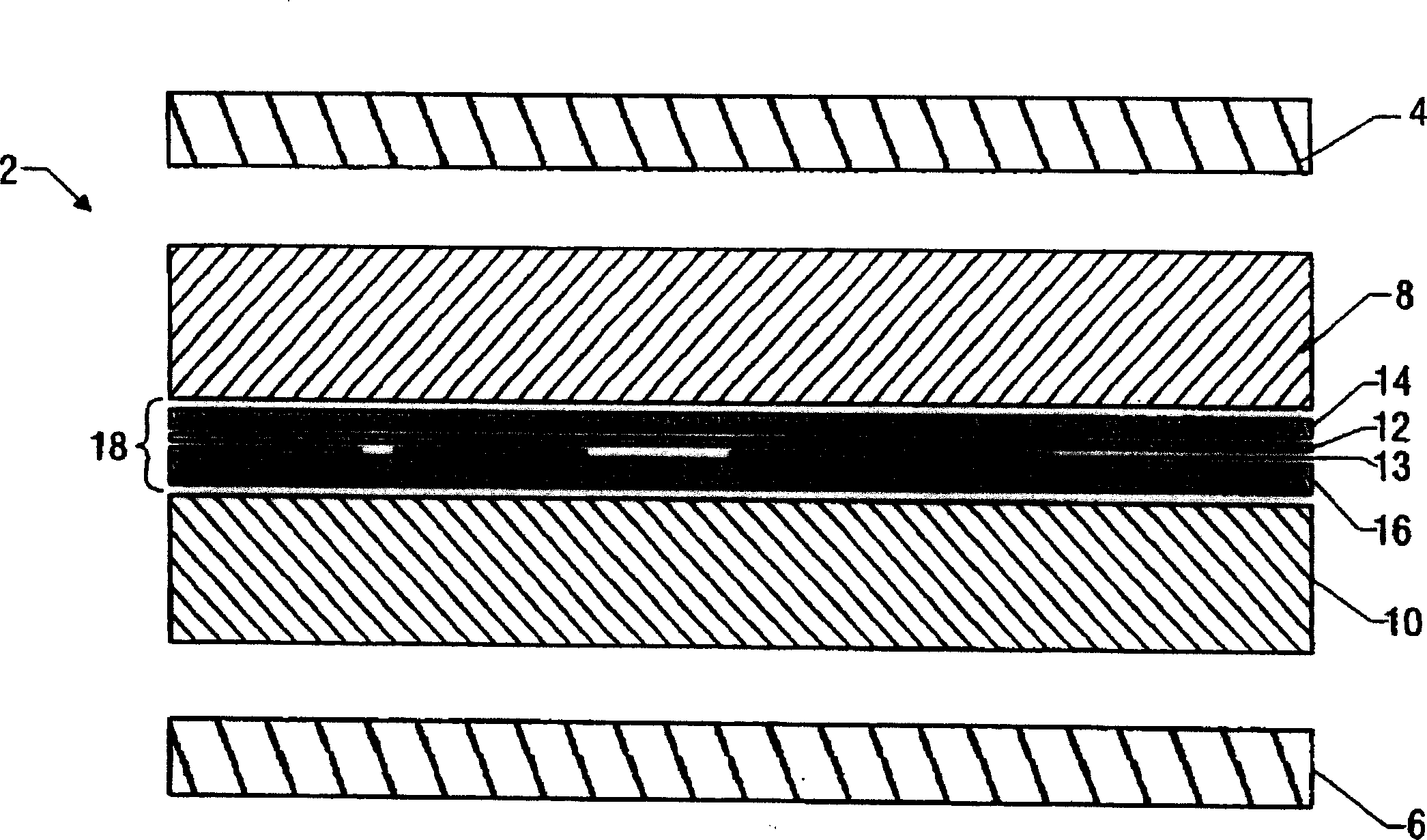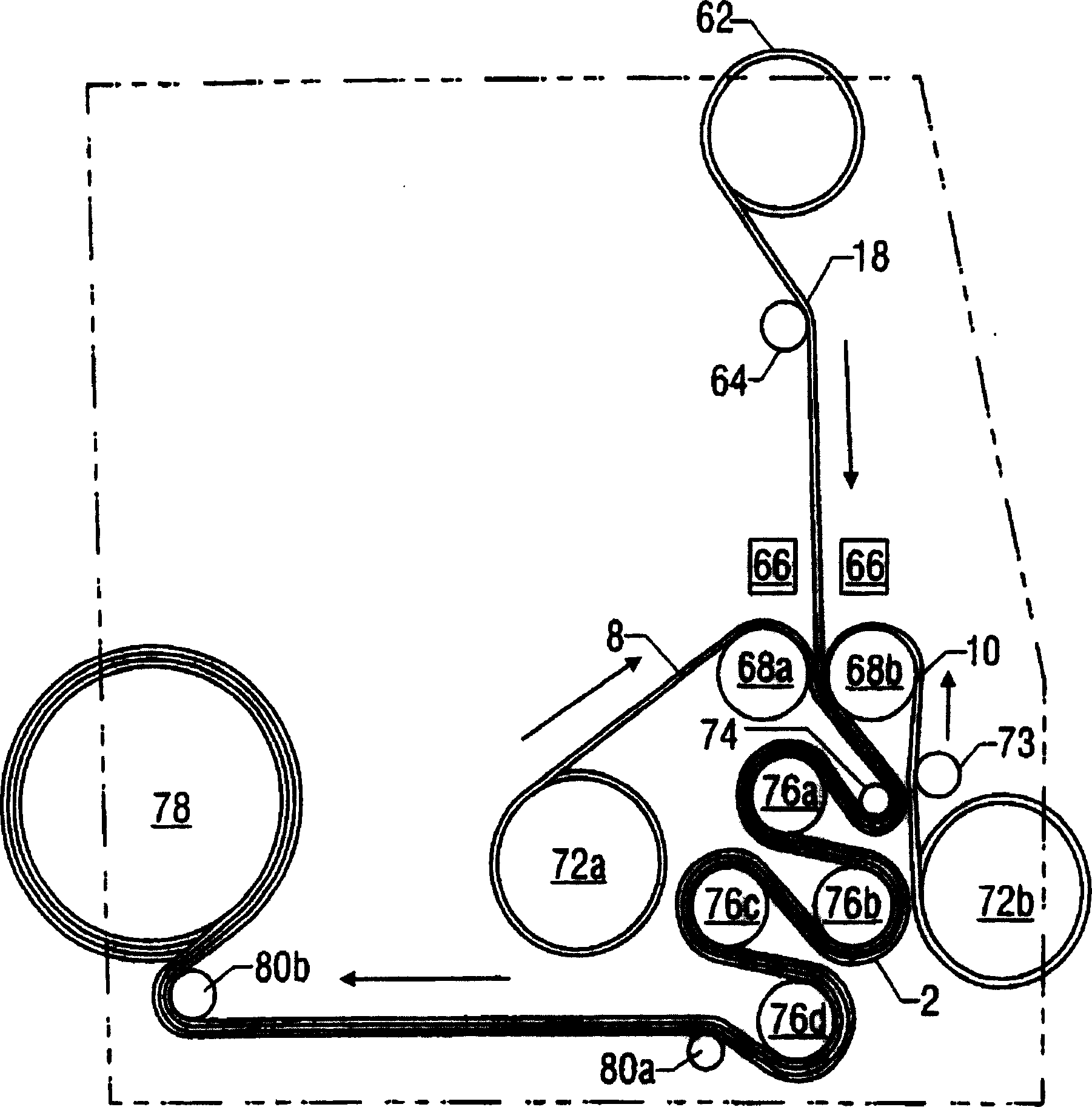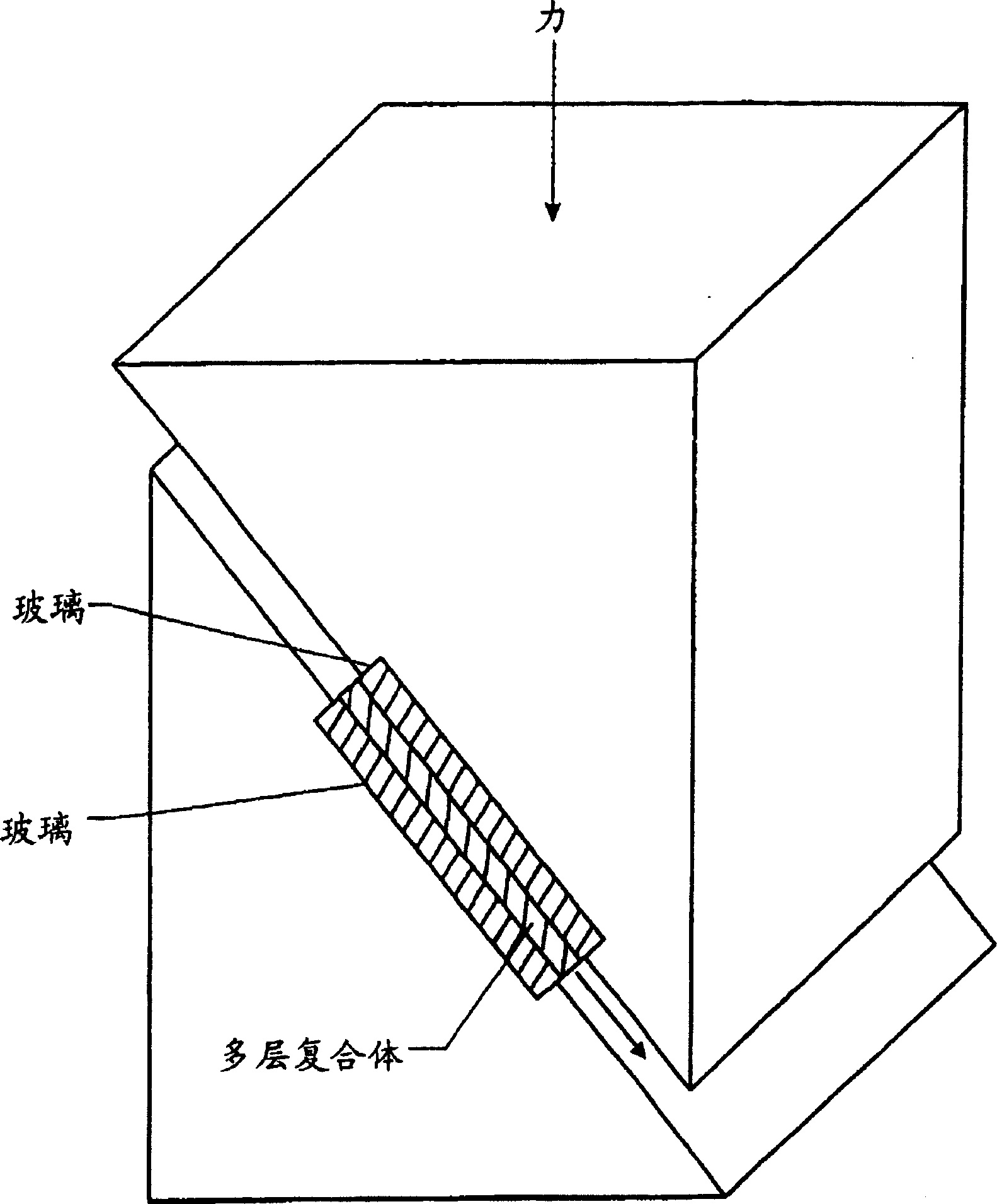Digital color-design composite for use in laminated glass
A technology for laminating glass and composites, applied in glass/slag layered products, surface pretreatment bonding methods, layered products, etc., can solve problems such as poor adhesion and unacceptable interactions
- Summary
- Abstract
- Description
- Claims
- Application Information
AI Technical Summary
Problems solved by technology
Method used
Image
Examples
Embodiment 1
[0079] Adhesion on the uncoated side was promoted by plasma treatment on Dun-Kote® DP38-3 mil high clarity PET film (manufactured by Dunmore Corporation, Bristol, Pennsylvania) with a proprietary coating for improved thermal transfer printing performance sex. The process conditions employed during the plasma treatment were such that the resulting 90 degree peel adhesion after autoclave lamination of the treated surface with a Saflext plasticized PVB interlayer (RB41) available from Solutia Inc. was found to be 8N / cm.
Embodiment 2
[0081] A PET cover film consisting of a 1 mil layer of ethylene-vinyl acetate copolymer containing 28% vinyl acetate was coated onto 2.65 mil Hostaphan(R) 4707 PET film (available from Mitsubishi Films, Greer, SC). The surface of the PET cover film coated with ethylene-vinyl acetate copolymer was not tacky prior to use. The uncoated PET surface of the PET / EVA cover film was plasma treated prior to coating. The uncoated PET surface was tested for 90 degree peel adhesion after autoclave lamination with a standard Saflex(R) plasticized PVB (RB41) interlayer and the result was 12 N / cm.
Embodiment 3
[0083] A digital test image was printed onto the coated surface film of Example 1 using a Matan SPRINTER B printer and a Duracoat(R) DC300 series C-M-Y-K belt (supplied by T2 Solutions, Amherst, NY). The resulting test images exhibited excellent color and image detail.
PUM
| Property | Measurement | Unit |
|---|---|---|
| Haze value | aaaaa | aaaaa |
Abstract
Description
Claims
Application Information
 Login to View More
Login to View More - R&D
- Intellectual Property
- Life Sciences
- Materials
- Tech Scout
- Unparalleled Data Quality
- Higher Quality Content
- 60% Fewer Hallucinations
Browse by: Latest US Patents, China's latest patents, Technical Efficacy Thesaurus, Application Domain, Technology Topic, Popular Technical Reports.
© 2025 PatSnap. All rights reserved.Legal|Privacy policy|Modern Slavery Act Transparency Statement|Sitemap|About US| Contact US: help@patsnap.com



